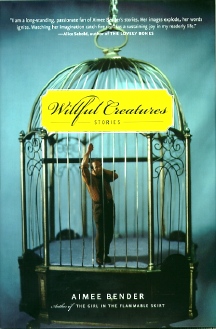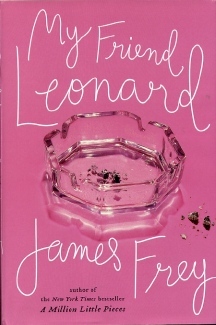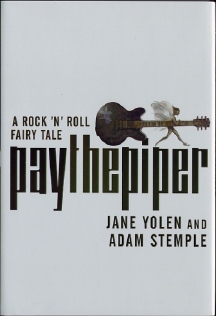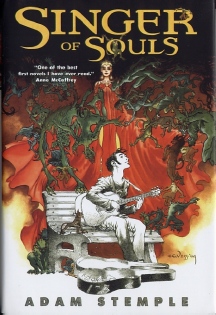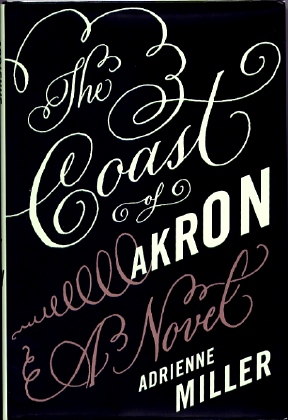|
|
|
This Just In...News from the Agony Column
|
07-29-05: HOWTO Obsessively Cover a Trade Paperback With a Mylar Book Cover |
||
Last Dispatch before Worldcon
I'll be leaving on Monday to head out to WorldCon in Glasgow. It's a big ol' vacation for my wife Claire and myself, the biggest we've ever taken. We'll be going to Glasgow, then to Hereford, then to London, gone for a couple of weeks. During that time, I hope to be able to report from the convention, and assuming everything works fine, you should see the equivalent of my Torcon coverage. After the convention, there may be blips in the news, and when I get back...stacks and stacks of books to talk about and a super-duper deal I've been working on for a while. New realms for The Agony Column. But BEFORE I leave, I decided I wanted to take with me the trade paperback proof of Vellum to devour on an airplane or two. I decided I had to cover it with my standard Demco covering for hardcover books, and it occurred to me that perhaps not everybody has twigged on how to do this.
So, in the spirit of Make Magazine, I've created this gallery that shows all the steps -- and I'm not going to tell you how many there are, since you'll think I'm even crazier than I probably am. Now, this system will also allow you to cover mass market paperbacks, and before you scoff at such an idea, think how much first MMPB copies of William Gibson's 'Neuromancer' or Michael Marshall Smith's 'Only Forward' are going for. And though I obsessively show every step, it only takes a few minutes to do this, but it actually took me a few times to get it down to a science such that the books are really convenient to carry around and read. And remember -- these covers dont protect the pages themselves from salsa, curry, tartar sauce, catsup, or brown gravy. So browse the gallery, learn how to cover your trade and mass market paperbacks and -- see you in Glasgow! Or Hereford. Or London... |
|
07-28-05: Aimee Bender's 'Willful Creatures' |
|||
The
Ungrateful Children of Every-Damn-One
And that brings us to the work of minimalist writer Aimee Bender, and her new collection of short stories 'Willful Creatures' (Doubelday / Random House ; August 16, 2005; $22.95). If you've not encountered Bender's deeply bizarre but entertainingly straightforward work, then here's your chance. I guaran-effing-tee you that most of my readers who pick up this book will read bits from one or two of the stories within, buy it, and then have to strap themselves away from -- not to -- the reading chair to keep from reading this in one gulp. Now, you could just give in, and read this in an afternoon, though I wouldn't necessarily want to hear from you that afternoon. You might want to put out my eyes, because, well, they can see you. You might look at the baking potatoes on my kitchen counter, waiting to be micro-waved or boiled and try to stop me, because, well, you wouldn't want me to microwave or boil your children, now, would you? But should you read this book in one fell swoop, you'd do so knowing that you were going to read it again, almost immediately. It would be as if you could wolf down a box of See's Chocolates after having given up chocolate for years, and then spend the next week eating the exact same box of chocolates again, at your leisure, slowly. Bender is box-of-chocolates beautiful. She's also a superb surrealist who works in the mode of fellow minimalist Chuck Palahniuk, writing stories with a clarity that will make you the reader feel as if you're writing them as you read them. They are just absurdly simple and of course, simply absurd. But she writes with such authority, with such perfectly unblinking precision that you immediately accept the unblinking reality of what she has to say. Like: "The boy was born with fingers shaped like keys." Or: "The man went to the pet store to buy himself a little man to keep him company." Those words reshape your reality. Boys have key-shaped fingers. You can buy little men in cages. Or, depending on how you feel about yourself, you might be a little man who lives in a cage and gets sold to keep another man company. The fact of the matter is that Aimee Bender uses language as if it were a technology. In fact, language is a technology, and she uses language the way science fiction writers use technology. She re-arranges the elements of presently-used language to create something different, but very informative about the present. Her work is powerful, funny, and very deeply creepy. It's so well wrought that one quickly begins to wonder about art imitating life, since Bender, well, bends language, and does so to gut reality, to slice it open with little word-razor blades and let the shiny insides out. Spill them over the reader's mind. You can read the future in carefully spilled viscera. I suggest that readers would be well advised to buy this book, read the stories, but avoid looking too closely at the future Bender opens up for them. I'm guessing -- just guessing -- it might make one uncomfortable. It depends which side of the bars you're on. |
|
07-27-05: "It's actually scarier when something is unknown" |
|||
A
Conversation With Elizabeth Kostova
But 'The Historian' proved to be a compelling novel, easy to read, yet literarily satisfying. Moreover, it was clearly the work of not just a talented writer but also an intelligent researcher, and I looked forward to the interview. Keeping up with the breathless aspect of her whirlwind success, Kostova was in the midst of signing 200 books for a local bookstore just before our interview, and she literally flew down the path into the lobby of KQED. We wedged ourselves into the pint-size room that was available, and quickly became wrapped up in a conversation that honed ranged across as wide a swath of subjects as her complex novel. She made it clear that she wasn't setting out to write a horror novel; in fact, she doesn't even read horror novels, because she finds them too scary. I will be the first to admit that I really had my doubts about 'The Historian'. When a novel is given all the advertising this one is getting, it sets off my natural contrariness. But I was convinced the hard way and the best way: by reading the book. 'The Historian' is a complex and very satisfying novel, the kind of novel that is like a perfect meal. And Kostova is certainly a fascinating master chef, though there's no recipe for her kind of success. Or if there is it is absurdly simple. She simply did precisely what she wanted to, she let the novel take its time and take the course it sought naturally. And that explains the organic feel of 'The Historian', the sort of handcrafted quality you experience while reading it. As for the research? I'll let her tell you about that, and about the charts. I've posted MP3 files for those with iPods or a quiet place to listen, and RealAudio files for those who will simply close the office door and slip away as the talented Elizabeth Kostova takes you on her private tour of remote monasteries in Easter Europe. Chances are, if you havent bought the book, you'll want to after hearing her speak, and here, the bestseller aspect provides a nice reward, since you can get a huge reading vacation for a pittance. |
|
07-26-05: "We learn to become normal"; 'Pay the Piper' and 'Singer of Souls' |
||||||
A
Conversation With James Frey
I talked to Frey up in San Francisco at KQED studios, and finally scored the big studio again, which was quite fun. I got Frey to talk about his experiences as a bagman for Leonard, which is one of the central threads of 'My Friend Leonard'. Now that I've finally written my review, I've allowed myself to take a gander at a few others, and I have to say that I really disagree with the idea that 'My Friend Leonard' is not quite as good as 'A Million Little Pieces'. I thought it was much better. It was more compulsively readable because I think he's kept his unique prose style but unkinked it a bit, turning this book for me into a very quick read. Moreover, actually had me both laughing out loud and crying, though not at the same time. He doesn't have to -- and does not -resort to movie-style shenanigans to evoke emotions. He hews close to the source -- himself and as he told me the first time around his "style is no style". I have both MP3 and RealAudio files uploaded for you, and I'd suggest that you could listen to this even before you buy the book, which you should do immediately. Frey's a great chronicler of his own minor and major triumphs, and if you ever felt that you deserved some kind of award for just fricking living, then, he's your man. Frey makes us feel that our own micro-lives, lived one typed character at a time, are not just worth living. We're spectacular. Hell, we're all rock stars. |
||||||
Adam
Stemple & Jane Yolen Sing for their Supper
So I guess it's not surprising that both 'Singer of Souls' (Tor / Tom Doherty Associates ; August 3, 2005 ; $22.95) and 'Pay the Piper' (Tor / Tom Doherty Associates ; August 3, 2005 ; $24.95) -- the latter co-written with Jane Yolen -- are on the slim side. It's certainly welcome in this world of book-bricks, though they must just manage to hump over the word count for novella into the world of novels. And given Stemple's work in the Tim Malloys, I suppose it is also not surprising that they both feature guitars on the cover. 'Pay the Piper' is yet another re-telling of the story of the Pied Piper of Hamelin, itself a sort of deal-with-the-devil tale. Calling itself "A rock and roll fairy tale," this novel, co-written with Yolen, follows Callie McCallan, a fourteen-year old school paper reporter who scores an interview with Peter Gringas, the lead singer of Brass Rat. As with all blessings bestowed in any bit of fiction calling itself a fairy tale, this one is decidedly mixed. Because Brass Rat is not just popular. They're addictive. 'Pay the Piper' follows in some hallowed footsteps. Going back to the stacks, you'll find that Goethe and Robert Browning had a go at this legend. And stepping forward to recent horror fiction, you'll find more current examples. Back in the 1980's the paperback publisher of Ray Garton's 'Crucifax Autumn' censored parts of the book and changed the intent of the author to turn the novel into a cautionary tale about the dangers of rock and roll. Small press publisher Dark Harvest came to the rescue with an unexpurgated version, thus upping the ante in our nascent culture wars. I believe that this was around the time when Tipper Gore first raised a ruckus about the toxic lyrics found in music she didn't like. Talk about the future you make! And much more recently, China Miéville brought us 'King Rat', in which the piper gets a drum-n-bass beat. Miéville only gives us a hint of Hamelin, but it is a hint well worth searching out, especially if you can manage to lay your hands on the recent deluxe edition from Earthling Press. Stemple and Yolen tell us in an entertaining Introduction that the legend is based on actual events in the real town of Hamelin in the year 1284. They must have been planning for the tourist attraction in years to come. Perhaps they can add a Rock and Roll wing to the inevitable museum, in which case, they can add Stemple and Yolen's fast-paced compact tale to the collection.
With two books that page-wise add up to a lot less than the average book-brick, its clear that Stemple is bringing his pop music inclinations to the literary world. Should you need a novel that is an analogue to the three-minute tune of terror, either -- or both -- of these will certainly fill the bill. And no money is required for the hat, though I must admit that I'll probably see Stemple live if he plays at Worldcon, where his mother, Jane Yolen, is a Guest of Honor. |
|
07-25-05: Adrienne Miller Explores 'The Coast of Akron' |
|||
Dysfunctional Family, Midwestern Style
As you might expect, the Havens are not your everyday 2-kids, 2-cars family. Lowell Haven, the patriarch, is an aging horndog and a nouveau-riche liar with pretensions to aristocracy. His former wife Jenny was a once a talented artist, but today she lives in Lowell's shadows, hiding her secrets. And today Lowell is the artiste, world-famously known for portraits of his favorite subject: Lowell Haven. Scratch that, Lowell was an artist, since he stopped painting five years ago, to the dismay of whoever it might be that would buy the work of an artist who would paint only himself. But then, when you look at what's on the walls of today's galleries you really have to wonder where else it might hang. Certainly there's no wall space in the house of my mildly dysfunctional family. Only room for bookshelves. And even as I type this, my lovely wife is clearing out the garage so that I can put even more books in there. But wait, I was writing about a family more dysfunctional than mine, right? Right! Lowell's ostensible reason for his works stoppage is Merit, Lowell and Jenny's daughter who is understandably trying to achieve escape velocity from her family. And finally, we have Fergus, oh Fergus: with hair so red it is the definition of red, Fergus was once Jenny's best friend before HE SHACKED UP WITH HER FATHER in a bezillion room Tudor mansion. Fergus hopes the big-ass party he's planning will lure Merit back to hearth and home. You see, Fergus has been running a sort of Algonquin Round table in the Midwest, and everyone who is anyone is hoping to get an invite to his super-star bash. But readers, I know you'll remember the scene from Monty Python's The Meaning of Life wherein after eating a huge dinner, an incredibly fat man accepts just one thin mint and explodes in a cataclysmic spray of guts and half-digested food. Fergus, you see, has a thin mint up his sleeve as well, the one guest, that one guest, just one person, how can it matter if he invites....Kim Jong Il? Well, perhaps it's not Kim Jong Il, though the journalist trying to get an interview with Fergus feels that setting a talk in Pyongyang might be easier than nailing Fergus to a time and place. The action unfolds not just in the Midwest, but from mid-seventies London to the non-existent place described in the title. And, yes, I did have to look it up on Google maps to be sure. No real coastline in Akron, though there's lake outside of town and thin blue line that suggests more of an open sewer than a coast line. Of course, open sewers and families go hand in hand. Miller handles all this arcane jockeying about with a nicely understated sense of the absurd familiar to anyone who has directed a similar sensibility to their own relatives. As the fiction editor for Esquire she embodies the concept of "instant literary credibility." You have to feel sorry for Miller's own family, who are without doubt very nice and rather sedate. Because of the many truisms one cannot escape perhaps the most cogent is the "write what you know" equation, and so one can't help but assume that those who write about dysfunctional families probably have a bit of experience. That's why we're reading about them in the first place, to reassure ourselves that well, if you have no wall space whatsoever, at least you dont have paintings you did of yourself covering the walls. And hey if you do, then, well, you may not be normal but perhaps you should be rich and famous. That's pretty re-assuring as well. But leave that guest off the party list. |

